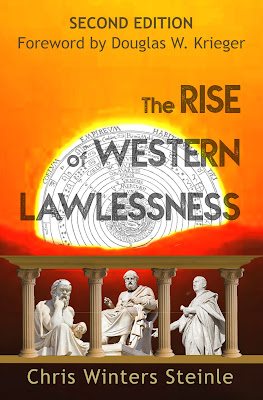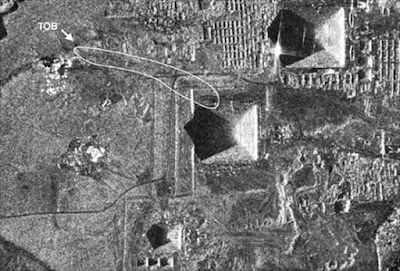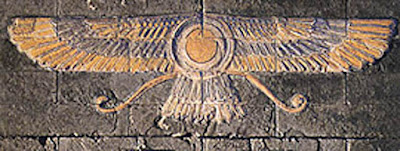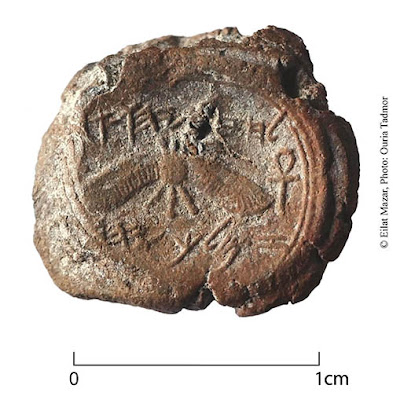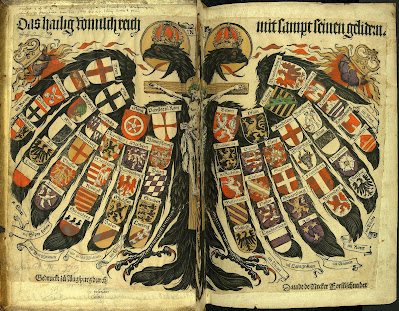The New World Order in
Antiquity: A 4,000-year history
Two-headed eagle on sphinx located at
the right of the Sphinx Gate, Alaca Höyük, Turkey.
Excerpts
from THE
FORGOTTEN AGE OF JUDAH: The Untold Story of Grace in the Second Temple Period,
By Dr. Douglas Hamp, Chris Winters Steinle
Copyright 2021 by the
Commonwealth of Israel Foundation, Phoenix, USA
Published
by the Commonwealth of Israel Foundation.
Chapter
7: Collusion and the Judgment of Nations
Over the last 50 years, much attention has been focused on
identifying the hidden powers that are expected to emerge as the One-World
Government of the antichrist. There is, in fact, abundant evidence that the
wealthy men of the world do hold sway over the course of world affairs. This is
only to be expected, as asserted by James: “Do not the rich oppress you and
drag you into the courts? Do they not blaspheme that noble name by which you
are called?” (James 2:6-7). Certainly, the Hapsburgs Dynasty did go underground
around the time that democracy was proposed in Europe and America. But if these
royal families did go broke, as purported, why do we still find them
represented at such high-level meetings as the Bilderberger’s gatherings?
Despite the reality that social and political policy appears
to the everyday observer to be pushed down from above, rather than rising from
the populous, responses like the article below seem to be intended to quash any
serious investigation into the existence of any such “world-ruling” body.
If you were really a member of the global élite,
you’d know this already: the world is ruled by a powerful, secretive few. Many
of the rest of us peons have heard that in 2004 both candidates for the White
House were members of Yale University’s secretive Skull and Bones society, many
of whose members have risen to powerful positions. But Skull and Bones is small
potatoes compared with the mysterious cabals that occupy virtually every seat
of power, from the corridors of government to the boardrooms of Wall Street.
Take the Illuminati, a sect said to have originated
in 18th century Germany; and which is allegedly responsible for the
pyramid-and-eye symbol adorning the $1 bill: they intend to foment world wars
to strengthen the argument for the creation of a worldwide government (which would
of course be Satanic in nature). Or consider the Freemasons, who tout their
group as the “oldest and largest worldwide fraternity” and boast alumni like
George Washington. Some think that despite donating heaps of cash to charity,
they are secretly plotting your undoing at Masonic temples across the world. Or
maybe, some theorize, the guys pulling the strings aren’t concealed in shadow
at all. They might be the intelligentsia on the Council on Foreign Relations, a
cadre of policy wonks who allegedly count their aims as publishing an erudite
bimonthly journal and establishing a unified world government—not necessarily
in that order.
Some conspiracy theorists believe the secret elite will
become so powerful, so confident, that in the end they will walk brazenly
across the world stage in plain view. But what if these secret powers have
never been secret at all—but well known and open to view? There was a time,
however, when it was easier to expose the Kingdom of Man, in contrast to the
Kingdom of God—represented on earth as His Elect, the people of God. Today,
many nations around the world “identify” as the people of God. But 2,000 years
ago, this was not the case.
At the close of the Second Temple Period, when it was
apparent that yet another empire—this time the Roman Empire—was on the verge of
taking Israel captive all over again, the Jewish sages were emboldened to
identify the Kingdom of Man, once and for all.
Pertinent citations from 4 Ezra Chapter 11 and The
Assumption of Moses, Section 10 are presented below without comment. The
objects within these visions/analogies will become clear as this chapter
develops.
The Eagle and the Lion—4th Ezra/2 Esdras
2 Esdras 11, Common English Bible (CEB):
The Vision of the Eagle
1 On the second night I had a dream. I
saw an eagle, with twelve feathered wings and three heads, rising up from the
sea. 2 As I looked, it spread its wings over the whole earth, and all the winds
of heaven blew toward it, and the clouds gathered around it. 3 Out of its wings
grew opposing wings. These became small, tiny wings. 4 Its heads were at rest.
The middle head was larger than the other heads, but it was also at rest with
them.
5 I kept looking and saw the eagle flying
with its wings to rule over the earth and over those who lived on the earth. 6
I saw how everything under heaven was made to submit to it, and no one opposed
it, not a single creature that lives on the earth... (Verses 7-32 proceed to
depict the interactions of various wings and heads—omitted here because they
aren’t necessary for understanding the symbology of these “bird”
representations).
The Vision of the Eagle and the Lion
33 After all this, I watched as the middle head,
just like the wings, suddenly disappeared. 34 There were two heads left,
however, which also ruled over the earth and over those who live on it. 35 I
looked and watched as the head on the right side devoured the one on the left.
36 I heard a voice saying to me, “Look in front of you and consider what you
see.” 37 I looked and saw something like a lion being roused, roaring out of
the forest. I heard how he spoke in a human voice and said to the eagle, 38
“Listen, you, and I will speak to you. The Most High says to you, 39 ‘Aren’t
you the last of the four beasts that I made to rule in my world so that I might
bring about the end of my times through them? 40 You, the fourth that has come,
conquered all the beasts that came before you, ruling over the world with much
terror and over the whole world with harsh oppression. You have lived in the
world with deceit for so long! 41 You judged the earth, but not in truth, 42
for you have oppressed the meek and injured those who caused no unrest. You
hated those who spoke the truth and loved liars. You destroyed the dwellings of
those who bore fruit and tore down the walls of those who had done you no harm.
43 Your insolence has ascended to the Most High and your pride to the mighty
one. 44 The Most High has reviewed his times. Look! They are finished, and his
ages are complete. 45 Therefore, eagle, you must utterly vanish, you and your
terrifying wings, your dreadful little wings and your evil heads, and your
dreadful talons and all your worthless body. 46 Then the whole earth will be
refreshed and restored, set free from your violence, and will hope for the
judgment and mercy of him who made it.’”
The Eagle and Israel—Assumption of Moses
The Assumption of Moses, Section 10.
The Church Fathers Clement of Alexandria, Origen, and
Didymus believed that Jude 9 was quoted from The Assumption of Moses. The
translation below fills in some undecipherable text, rather than skipping the
omitted characters in the manner of other translations.
7. For the Most High will arise, the
Eternal God alone,
And He will appear to punish the
Gentiles,
And He will destroy all their idols.
8. Then thou, O Israel, wilt be happy,
And thou wilt mount upon the neck[s and
wings] of the eagle,
And (the days of thy mourning) will be
ended.
9. And God will exalt thee,
And He will cause thee to approach to
the heaven of the stars,
And He will establish thy habitation
among them.
10. And thou wilt look from on high and
wilt see thy enemies in Ge(henna),
And thou wilt recognise them and
rejoice,
And thou wilt give thanks and confess thy
Creator.
By taking these two early Jewish
writings together, we can easily deduce that the “Lion” in 4 Ezra 11 is
analogous to “Israel” in The Assumption of Moses Sec. 10. However, in both
passages the enemy of God’s people is represented with allusions to birds: the
headed pairs of wings in Ezra, and the eagle—with necks and wings—in The
Assumption. So, who or what do these birds symbolize? This question is not
difficult to answer; all the necessary information is provided by studying World
History. From the onset of the Age of Man, birds were the primary focus of
worship.
Figure 1The Vulture
Stone at Göbekli Tepe.
Göbekli Tepe is a c. 12,000-year-old archaeological site in Anatolia,
Turkey. The deepest and oldest Layer III is also the most sophisticated with
enclosures characterized by different thematic components and artistic
representations. Pillar no. 43, the “Vulture Stone,” is shown in Figure 12
above. On the left-hand side, a vulture is holding an orb or egg in an
outstretched wing.
The older parts of the ancient tell may be more reliably
dated to circa 9,000 B.C. For those readers who hold to a roughly
6,000-year-old “new earth” creation position, just appreciate that Göbekli Tepe
is considered to be the oldest known site of worship on earth. To “secular”
scientists, and those who favor the theory of a recently inhabited old earth,
this site is placed on the timeline just at the close of the last Ice Age. The
important thing to observe within the scope of our study is the display of
various birds. Although the vulture is the predominant figure, the Ibis or
Crane is easily visible—up and to the right of the vulture and egg. What we
behold before our eyes is a real-life example of symbols of worship made like “birds
and four-footed animals and creeping things” (Rom. 1:23). And do take notice
that Paul begins his list with birds.
Supporting our thesis that the large birds, or birds of
prey, were to become the emblems of the Kingdom of Man during this Age, we
submit the “prehistoric” archaeological chamber known as the “Cave of the
Birds,” located just below the surface of the Giza plateau. This location begs
the question: Were the pyramids built at this ceremonial site of worship based
on the importance of the Tomb of the Birds?
Figure 2 CollinsA2-Gizas
Tomb of the Birds
Figure 3 Tomb of the
Birds in relation to the Giza Pyramids (underground TOB cave circled).
The explorer and discoverer of the caves was unable to carry
out research on the content of the tunnel, being interrupted indefinitely by
Egyptian authorities. Below are his initial findings. His expectation, however,
regarding the Ibis turned out to be correct.
Identifying what type of birds were interred might
well provide some clue as to how the ancient Egyptians viewed the entrance to
Giza’s cave world. My money would be on the birds being either ibises,
indicative of the cult of Thoth (the Greek Hermes), or falcons, suggestive of
the cult of Horus or more intriguingly that of Sokar, the guardian of the
Memphite necropolis in its role as the Fifth Hour of the duat-underworld as
portrayed in the Am-duat funerary text. Other bird types might include the
vulture, indicative of the cult of Mut; the goose, the totem of the earth-god
Geb, the eagle, examples of which were found recently in a new tomb discovered
at Saqqara, or even the crane, which might hint at a very archaic cult indeed.
More than 4 million sacred ibis mummies have been
found in the catacombs of Tuna el-Gebel and 1.75 million have been discovered
in the ancient burial ground of Saqqara. The vast majority were votive
offerings to the god Thoth, a practice that had its heyday between 450BC and
250BC.
The significance of the Ibis becomes clear when it is
understood that the Ibis was central to an Egyptian creation story—a story that
wholly contradicts the biblical account. The Ibis, therefore, became a symbol
of the Egyptian religion. But the bird symbol was also one of the oldest carvings
found on Hittite and Mesopotamian reliefs. Over the course of the next several
millennia, the symbol of the bird took on the meaning that is ascribed to it
today—the attributes of “kingdom” and “authority.” The winged sun or winged
disk was a symbol of worship when it first began to be used; but by the time of
Judah’s King Hezekiah, the winged disk had become synonymous with kingship.
Figure 4 Benben
stone from the Pyramid of Amenemhat III, Twelfth Dynasty. Egyptian Museum,
Cairo. Copyright free image enhanced to
feature the winged disk at the top.
The Benben stone is an object that is found in the
mythology of ancient Egypt. Note the winged disk at the top of Figure 15. This
mythical stone is thought to have been part of a shrine at the temple dedicated
to the deity Atum in Heliopolis. The Benben stone is also an architectural
term, and is the name given to the tip of an obelisk or the capstone placed on
top of a pyramid. In the mythology of ancient Egypt, there are several accounts
of the creation of the world. According to this version of the creation story,
the universe was brought into being by Atum. It was believed that in the
beginning, there was nothing but darkness and chaos. It was out of the dark
waters that the primordial hill, known as the Benben arose, on top of which
stood Atum. Because the Benben rose from the primeval waters, it has been
suggested that this word is associated with the verb ‘weben’, which is the
Egyptian hieroglyph for ‘to rise’.
Next, we observe that the winged disk became a prominent
icon throughout the eastern Mediterranean reaching into the Fertile Crescent.
In early Egyptian religion, the symbol Behedeti represented Horus of Edfu,
later identified with Ra-Harachte. As time passed (according to interpretation)
all of the subordinated gods of Egypt were considered to be aspects of the sun
god, including Khepri.
From roughly 2000 BC, the symbol also appears in the Levant,
Mesopotamia, and Asia Minor. It appears in reliefs with Assyrian rulers and in
Hieroglyphic Anatolian as a symbol for royalty, transcribed into Latin as SOL
SUUS (literally, “his own self, the Sun”, i.e., “His Majesty”).
Figure 5 Winged-disk,
Susa, Mesopotamia
Figure 6 The seal of
Tudhaliya IV (1237–1228 B.C.) is stamped on this 4-inch-high fragment of a
letter sent to the king of Ugarit. Although the letter is written in cuneiform,
the seal is in Hittite hieroglyphics. Credit: Erich Lessing.
As early as 1900 B.C.E., an Indo-European people
began to settle in what is now Turkey. By the 16th century B.C.E., they were
powerful enough to invade Babylon. Their might continued to expand until they
were a superpower on the level with Egypt and Assyria. The Hittites play a
prominent role at key places in the Hebrew Bible: Ephron the Hittite sells
Abraham the family burial ground (Genesis 23); Esau married Hittite women, and
Rebecca despised them (Genesis 26:34); frequently they are listed as one of the
inhabitants of Canaan (e.g., Exodus 13:5; Numbers 13:29; Joshua 11:3).
From ca. the 8th century BC, the winged solar disk
appears on Hebrew seals connected to the royal house of the Kingdom of Judah.
Many of these are seals and jar handles from Hezekiah’s reign, together with
the inscription l’melekh [LMLK] (“belonging to the king”).
Figure 7 HEZEKIAH IN
THE BIBLE. The royal seal of Hezekiah, king of Judah, was discovered in the
Ophel excavations under the direction of archaeologist Eilat Mazar. Photo:
Courtesy of Dr. Eilat Mazar; photo by Ouria Tadmor.
The bulla (Figure 18), which measures just over a centimeter
in diameter, bears a seal impression depicting a two-winged sun disk flanked by
ankh symbols and containing a Hebrew inscription that reads “Belonging to
Hezekiah, (son of) Ahaz, king of Judah.”
Figure 8 Hezekiah’s
Seal
“Hezekiah Seal (Figure 19) Proves that Ancient Jerusalem was
a Major Judahite Capital.” Similar seal impressions had already been found – by
thieves. This one uniquely found in situ proves King Hezekiah’s connection to
the LMLK symbols and the existence of an advanced Judahite administration.
Regrettably, the Hezekiah Seal does not just prove ancient
Jerusalem was a major Judahite capital. It also proves that the government of
Judah had already been compromised by using the symbology of the Nations—and
especially, the bird icon of Egypt and Canaan.
Leviticus 18:2-5: The Lord said to Moses, “Speak
to the Israelites and say to them: ‘I am the Lord your God. You must not do as
they do in Egypt, where you used to live, and you must not do as they do in the
land of Canaan, where I am bringing you. Do not follow their practices. You
must obey my laws and be careful to follow my decrees. I am the Lord your God.
Keep my decrees and laws, for the person who obeys them will live by them. I am
the Lord.
Although it is said that Hezekiah did what was right in the
sight of God, the God who also said not to “take their name on your lips” could
not have been pleased with the incorporation of this pagan symbol. Below is a
map showing how possessing variations of the King’s bird seal showed allegiance
to the king.
LMLK seals (with LMLK meaning ‘of the king’) are
ancient Hebrew seals stamped on the handles of large storage jars first issued
in the reign of King Hezekiah (circa 700 BC) and discovered mostly in and
around Jerusalem. The iconography of the two and four winged symbols are
representative of royal symbols whose meaning “was tailored in each kingdom to
the local religion and ideology”.
Figure 9 Sites where
LMLK seals were found
This technique of making modifications to the King’s seal of
authority was eventually copied internationally. Therefore, the “secret
society” controlling world affairs has been no secret for at least the last
2,000 years. The long anticipated one-world government has indeed been in place
since the onset of the Age of Man. The Coats of Arms image below represents
merely a few of the “bird banners” used by nations all over the world. The bird
symbol is an unspoken acknowledgment of submission to the king—the Kingdom of
Man. There is simply no other way to explain why many otherwise hostile and alienated
countries would choose the same mascot.
Figure 10
Coat of Arms with Eagle.
Many Jewish historians look to the reign of Herod (the
Edomite) as the point of infiltration by outsiders into Judah’s government. In
the same way, many Christians look to the reign of Constantine as the time when
the State took control of the Church. Yet, by recognizing the bird figure as
the symbol of national—and international—authority, it can be seen that the
influence of the overbearing state is more ubiquitous than could have been
initiated by one king or one emperor. Both the Eastern and Western arms of the
Christian Church had no reservations about displaying their true LMLK seals of
belonging.
Figure 11
Double Eagle insignia of the Byzantine Empire.
Figure 12
Quaternionenadler, an eagle of the Holy Roman Empire that shows the shields of
the member states by rank (1510).
Figure 13
Relief representing a two-headed eagle on the sphinx located at the right of
the Sphinx Gate, Alaca Höyük, Turkey
The double-headed eagle motif has been used as an emblem by
countries, nations, and royal houses in Europe since the early medieval period.
Notable examples include the Byzantine House of Palaiologos, the Holy Roman
Empire, the House of Habsburg, and the Ruriks and Romanovs of Russia. The
Russian use of the double-headed eagle motif (dating from the adoption of it by
Ivan III in 1497), though iconographically modeled after the Byzantine, was
likely in imitation of the Hapsburgian.
It would appear curious that regional Christian empires
would choose for their mascot the Hittite double-headed eagle. The selection of
the Hittite eagle is suspect because the “Cradle of Christianity”—Antioch of
Syria—lies within the borders of the Ancient Hittite Empire. This possible
spiritual connection will be addressed in the next chapter.
Yazılıkaya is an ancient
sanctuary that served the Hittite capital of Hattusa, located in modern-day
Boğazkale, Turkey. The region (known as the “land of Hatti”) was first
inhabited by the Hattians, around 2000 BC and was absorbed into a new Hittite
state. Hattusa was established as the capital during the 17th century BC by
King Hattusilis I. A large sanctuary, Yazılıkaya, was constructed outside the
city gates across roofless chambers formed inside a group of rock outcroppings.
The chambers depict various rock-cut reliefs portraying the gods of the Hittite
pantheon such as the sun-goddess Hebat and the storm-god Teshub, with most of
the reliefs dating from restorations by King Tudhaliya IV and king Suppiluliuma
II in the late 13th century BC.
Figure 14
Yazilikaya double-headed eagle relief
Among the reliefs is the image of the double-headed eagle,
thought to represent the deific daughter and granddaughter of the Tešub, the
storm god. Such a record of the progeny and international battles of the
“wings” is exactly what is described in the interim verses of the 4 Ezra
citation, which were omitted, at the beginning of this chapter. The artwork
from the Early Dynastic period of Early Mesopotamia has many double-headed king
figures. Figure 25 shows a double-headed winged figure with a humanoid body
(possibly representing a deity [or king]).
Figure 15
. Seal impression from Alalakh (Tell Atchana); from Assyrian Colony period
(Collon 1987:Illustration 142.
Cylinder seals, common in Mesopotamia, are the main design
influence on the Hittite stamp seals. The seal impression has imagery with
Mesopotamian themes and motifs. The double-headed eagles in each exhibit has
elongated necks and wide tails, with long, thin legs.
Figure 16
Seal impression from Acem Hüyük; Assyrian Colony period (mirrored double headed
winged creature—right half of imprint).
“Bicephalous, or double-headed, images constitute a widely
distributed class of objects of great variety about whose primordial relationships
we know little.” This is not the case in
the ancient Near East, where the class of objects showing the double-headed
eagle is much narrower, namely sculpture and seals, along with Hittite
monumental architecture. Recognizing that much of Mesopotamian culture
transmitted northwest from the southeast (Sumer) over time, and that the use of
the double-headed eagle followed the same route, the relationships of the
objects are generally understood, even if the meanings behind the iconography
are not.
“And thou wilt mount upon the neck[s and wings] of the
eagle” (The Assumption of Moses 10:8). Notice the reference to the “necks”
(plural) of the eagle (singular). The 4 Ezra passage quoted at the beginning of
this chapter also mentions the two-headed bird; but then, one of its heads is
removed. We see this same pattern over time, with the double-headed insignia
used in the Old-World symbology of Eastern and Western Christianity. Whereas
modern crests typically feature a single-headed bird of prey. Amazingly, it
would appear that the Jewish sages were spot on in their understanding of
Israel’s enemies, which more appropriately are the enemies of the Holy One of
Israel.
What is revealed by this study of the Kingdom of Man?
·
World rulers have affiliated under a common
ideology; and this religious system is based upon myths and false deities.
·
The camaraderie of the world’s nations and
empires can be dated to nearly prehistoric times.
·
Wings, winged disks, and eagles have been used
as a subtle—seemingly harmless—means to show that an entity is under authority
(belonging to the king). Unfortunately, the king/deity of the world’s nations
is Satan, the “ruler of this world.”
·
Sufficient influence by the heathen nations, on
both Jewish and Christian leaders, is revealed by these religions’
incorporation of worldly bird symbols.
·
The infiltration of worldly/ungodly ideologies
has influenced Judaism from ancient times; and this fellowship with the Nations
persisted into the Post-Apostolic Early Church; and continues today.
Due to the reign of the “World Rulers” κοσμοκράτορας (kosmokratoras—Eph. 6:12) God has allowed
for nearly 2,000 years the false doctrines that Judah was forsaken and replaced
by a new chosen people, the Church; and more recently with Dispensationalism,
that Judah was cut off along with the House of Israel and must wait for the
“rapture of the Church.” The immediate response, though, of “the prince of the
power of the air”—Eph. 2:2—was to “sell” these doctrinal narratives to the
public by “scattering” Judah so that they, like the House of Israel, might lose
their identity; something that God has never done.


